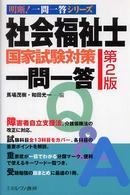Full Description
"This book would be a great tool for helping [today's future elementary teachers] acquire a 'gut level' understanding of mathematics concepts." - Hester Lewellen, Baldwin-Wallace College, OH "The writing in this text is very clear and would easily be understood by the intended audience. The real-world examples put the various math concepts into a context that is easily understood. The vignettes at the beginning of each chapter are interesting and they get the reader to begin thinking about the math concepts that will follow. Each of the chapters seem to build on one another and the author often refers back to activities and concepts from previous chapters which is meaningful to the reader because it lets the reader know that the information they are learning builds their conceptual understanding of other mathematical concepts. " - Melany L. Rish, University of South Carolina, Aiken Organized around five key concepts or "powerful ideas" in mathematics, this book presents elementary mathematics content in a concise and nonthreatening manner for teachers.Designed to sharpen teachers' mathematics pedagogical content knowledge, the friendly writing style and vignettes relate math concepts to "real life" situations so that they may better present the content to their students. The five "powerful ideas" (composition, decomposition, relationships, representation, and context) provide an organizing framework and highlight the interconnections between mathematics topics. In addition, the book thoroughly integrates discussion of the five NCTM process strands. Features: * Icons highlighting the NCTM process standards appear throughout the book to indicate where the text relates to each of these.*Practice exercises and activities and their explanations reinforce math concepts presented in the book and provide an opportunity for reflection and practice.*Concise, conversational chapters and opening vignettes present math contents simply enough for even the most math-anxious pre-service teachers.
Contents
Most chapters include "Preview," "Chapter Review," "Self-Check," "Selected References, "Online Activities" and "Activities and Exercises" Introduction Chapter 1: The changing landscape of elementary mathematics teaching and learning A distinction between conceptual knowledge and procedural knowledge Problem-focused teaching Communication in a mathematics classroom Reasoning Patterns and Change Mathematical connections Chapter 2: The Powerful ideas: Composition, Decomposition, Relationships, Representation, and Context 39 Composition Decomposition Relationships Representation Context Chapter 3: Powerful ideas related to the number system What is counting? (How Many?) What are numbers? How do we represent numbers? What is a number system? How have number systems developed differently in the past (and what's so special about today's number system?) The idea of base Basic Digits and Place Value Composition Chapter 4: Powerful ideas related to arithmetic Addition and Subtraction Multiplication Division Chapter 5: Powerful ideas related to geometry What is geometry? Why learn geometry? Why do people have difficulty with geometry? Spatial visualization and properties of shapes Translations, Rotations, Reflections (or Slides, Turns, and Flips) Similarity and Congruence Reasoning about types of shapes Deduction Chapter 6: Powerful ideas related to parts and wholes Reprise: One Whole or Many Parts? Decomposition and Partitioning What is the whole? (and Why does it matter?) Various meanings of fractions Equivalent Fractions and Simplest Form Adding and subtracting with fractions Multiplying with fractions Dividing with fractions Caution about a possible point of confusion Chapter 7: Powerful ideas related to the decimal numbers Relationship between decimal numbers and fractions Relationship between decimal numbers and place value concepts Special uses of decimal numbers: money and percent Arithmetic: Special concerns with decimal numbers Chapter 8: Powerful ideas related to measurement The concept of measurement Why does measurement matter? Linear measurement Linear measurement as compared with area measurement Measurement of volume Measurement of weight Measurement of time Units as standards The power of the metric system Uncertainty and degrees of precision Estimation Choosing the best measurement unit The use of formulas (or not?) Chapter 9: Powerful ideas related to data analysis Some general thoughts about statistics Posing statistical questions Collecting data Organizing and displaying data Measures of center The concept of distribution Descriptive Graphs Chapter 10: Powerful ideas related to probability What is probability? Finding the Number of Outcomes Some Problem Situations Formulas What about "Odds?" Some Common Misconceptions Chapter 11: Powerful ideas related to ratio and proportion Linear relationships Percent What about Non-linear Relationships Chapter 12: Powerful ideas related to reasoning Number sense Inductive reasoning Deductive reasoning The Yin and Yang of Using Inductive Reasoning and Deductive Reasoning Together Mathematical authority? Evaluation of mathematical thought. Chapter 13: Powerful ideas related to algebra Basics of Algebra Functions Graphing Functions on the Coordinate System Non-linear Functions Appendix A: Explanations of Complex Formulas The Combinations Formula Cross-multiplication for Solving Proportions The Lattice Method of Multiplication Appendix B: Answers to Self-Check and Activities








